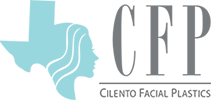Considering a secondary nose surgery can raise important questions about revision rhinoplasty risks, especially for patients in Houston, Spring, and The Woodlands. Revision rhinoplasty is inherently more complex than primary rhinoplasty due to existing scar tissue, altered anatomy, and patient expectations. By understanding common concerns—from bleeding and infection to breathing complications—you can make a confident, informed decision. Below, we explore the main risk factors, strategies to reduce complications, and why choosing an experienced, double board-certified surgeon like Dr. Ben Cilento at Cilento Facial Plastics can make all the difference.
Understanding Revision Rhinoplasty
What Is Revision Rhinoplasty?
Revision rhinoplasty, also known as secondary or corrective rhinoplasty, is a procedure aimed at improving the results of a previous nose job. Unlike primary rhinoplasty, revision surgeries must address existing scar tissue, altered cartilage structures, and patient concerns that were not fully resolved in the initial operation.
Why Do Patients Consider a Secondary Nose Job?
Patients seek revision rhinoplasty for various reasons:
- Persistent cosmetic concerns such as asymmetry, bump recurrence, or drooping tip.
- Functional issues like nasal obstruction or chronic breathing difficulty.
- Complications from prior surgery, including inadequate support or over-resection of cartilage.
Statistics from the American Society of Plastic Surgeons (ASPS) indicate that up to 15% of rhinoplasty patients may require some form of revision. While most outcomes are excellent, the risk profile differs significantly from a first-time nose job.
Common Risks of Revision Rhinoplasty
While many patients achieve outstanding results, understanding revision rhinoplasty risks helps you prepare mentally and physically. Key complications include:
1. Increased Scar Tissue and Fibrosis
Scar tissue from the initial surgery can obscure landmarks, making dissection more challenging. Excessive fibrosis may:
- Increase operative time.
- Make precise reshaping of the nasal framework difficult.
- Raise the chance of postoperative stiffness or contour irregularities.
2. Structural Weakness and Support Deficits
When significant cartilage was removed or weakened in the first procedure, reconstructing a stable nasal framework becomes vital. Risks include:
- Tip ptosis (drooping tip) if support grafts are insufficient.
- Dorsal collapse due to a weakened septal or upper lateral cartilage.
- Potential need for cartilage grafts from the ear or rib.
3. Bleeding and Hematoma Formation
Revision rhinoplasty carries a slightly higher bleeding risk because of disrupted vascular planes. Hematomas can:
- Increase postoperative discomfort and bruising.
- Raise the chance of infection.
- Require drainage under local anesthesia if significant.
Preoperative management includes:
- Discontinuing blood-thinners under medical guidance.
- Optimizing blood pressure control.
4. Infection and Wound Healing Issues
While infection rates are low (<1% in most series), revision cases can slightly increase risk due to:
- Poor vascularity in scarred tissue.
- Longer operative times.
Strict adherence to sterile technique, perioperative antibiotics, and close follow-up can minimize complications (source: Mayo Clinic).
5. Poor Aesthetic Outcome
Unsatisfactory cosmetic results are a leading concern for revision candidates. Potential issues include:
- Overcorrection or undercorrection of the dorsal hump.
- Persistent asymmetry between nasal halves.
- Visible irregularities or “pollybeak” deformity.
Realistic expectations and detailed preoperative computer imaging can reduce disappointment.
6. Nasal Obstruction and Functional Complications
Scar tissue or graft malposition may worsen breathing. Functional risks span:
- Internal valve collapse.
- Septal perforations causing whistling or crusting.
- Overall increased nasal airway resistance.
Many surgeons incorporate functional rhinoplasty techniques during revision to address airflow.
7. Anesthesia and General Surgical Risks
Risks related to anesthesia—though rare—must be considered. These include:
- Allergic reactions.
- Cardiovascular complications.
- Postoperative nausea.
A preoperative evaluation with an experienced anesthesiologist helps mitigate these risks.
Local Insights: Revision Rhinoplasty in Houston, Spring, and The Woodlands
Residents of Houston, Spring, and The Woodlands often seek revision rhinoplasty to correct issues from local providers. Key considerations in this region include:
- Seasonal Allergies: Increased nasal inflammation can influence healing.
- Environmental Factors: Houston’s humidity and pollen counts may affect postoperative swelling.
- Provider Selection: Look for double board-certified facial plastic surgeons with specialized training in expert rhinoplasty Houston.
Patients in Spring and The Woodlands benefit from quick access to Cilento Facial Plastics, a premier practice located in The Woodlands, Texas.
How to Minimize Risks
Choosing a Qualified Surgeon
Surgeon expertise is the single most important factor in reducing revision rhinoplasty risks. When selecting a surgeon, verify:
- Board certification in Facial Plastic & Reconstructive Surgery and/or Otolaryngology.
- Extensive experience in revision rhinoplasty cases.
- Positive patient reviews and before-and-after galleries.
Dr. Ben Cilento is double board-certified, with decades of experience in both cosmetic and reconstructive facial procedures. Learn more about his credentials on the About Dr. Cilento page.
Comprehensive Preoperative Planning
A thorough consultation should cover:
- Review of previous operative reports and photos.
- Physical examination of nasal anatomy and airway.
- Photographic analysis and 3D imaging simulations.
- Discussion of realistic aesthetic goals and potential grafting needs.
Optimizing Health Before Surgery
To reduce perioperative risks:
- Stop smoking at least 4–6 weeks before surgery.
- Maintain good control of chronic conditions like hypertension or diabetes.
- Avoid medications that increase bleeding, such as aspirin or certain supplements.
Meticulous Postoperative Care
Adhering to recovery guidelines helps prevent complications:
- Keep the head elevated for the first week to minimize swelling.
- Avoid strenuous activities for 4–6 weeks.
- Follow up promptly for splint removal, suture care, and breathing assessments.
Why Choose Cilento Facial Plastics for Your Revision Rhinoplasty
Cilento Facial Plastics is a premier facial plastic surgery clinic in The Woodlands, Texas, known for individualized care, advanced techniques, and exceptional outcomes. Under the leadership of Dr. Ben Cilento—double board-certified in Facial Plastic & Reconstructive Surgery and Otolaryngology—the practice specializes in complex revision cases. Patients benefit from:
- State-of-the-art surgical suites designed for patient comfort and safety.
- An experienced team dedicated to personalized attention throughout your journey.
- Collaborative planning with detailed computer imaging and honest counselling.
Explore additional services such as ethnic rhinoplasty, closed rhinoplasty, and PRP microneedling for comprehensive facial enhancement.
Consultation and Next Steps
If you live in Houston, Spring, or The Woodlands and are concerned about revision rhinoplasty risks, schedule a consultation with Cilento Facial Plastics. Dr. Cilento will evaluate your unique anatomy, discuss the pros and cons of surgery, and craft a personalized treatment plan. Visit our revision rhinoplasty page to learn more or call to book your appointment.
Frequently Asked Questions
How long is the recovery after revision rhinoplasty?
Most patients return to light activities within 7–10 days and resume moderate exercise by 4–6 weeks. Complete healing and final results can take up to a year.
Can breathing improve after revision rhinoplasty?
Yes. Combining functional airway reconstruction with cosmetic refinement often enhances nasal breathing and overall comfort.
Is revision rhinoplasty more expensive than primary rhinoplasty?
Costs vary depending on the complexity of the case, graft requirements, and anesthesia time. Many practices, including Cilento Facial Plastics, offer financing options to help manage investment in your confidence and well-being.
For more information on related procedures in Houston, explore our pages on facial contouring, teen rhinoplasty, and eyelid surgery Houston TX. Trust your face to a team dedicated to excellence and authenticity in facial plastic surgery.








